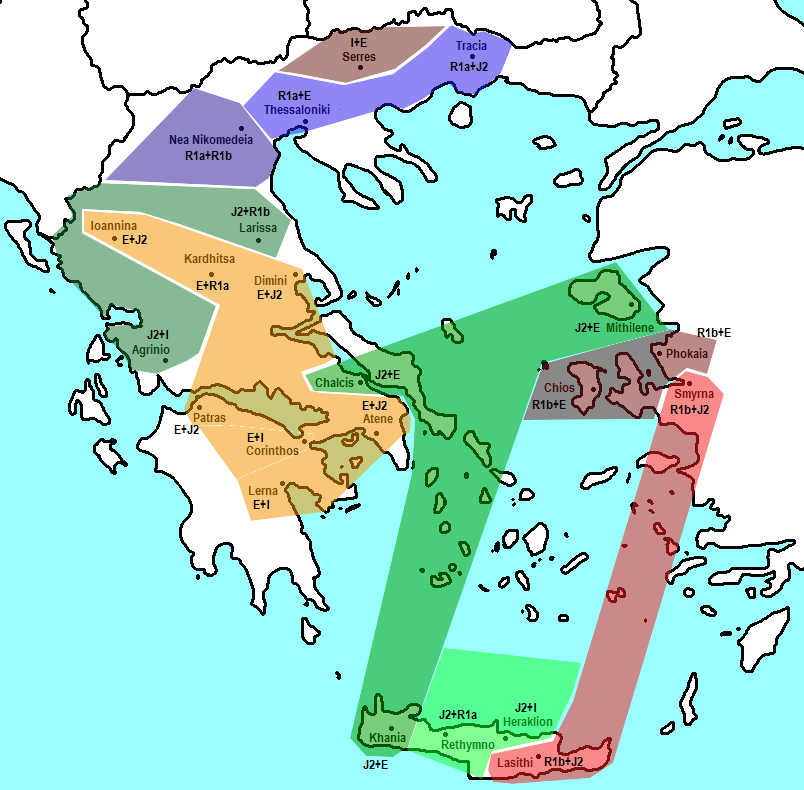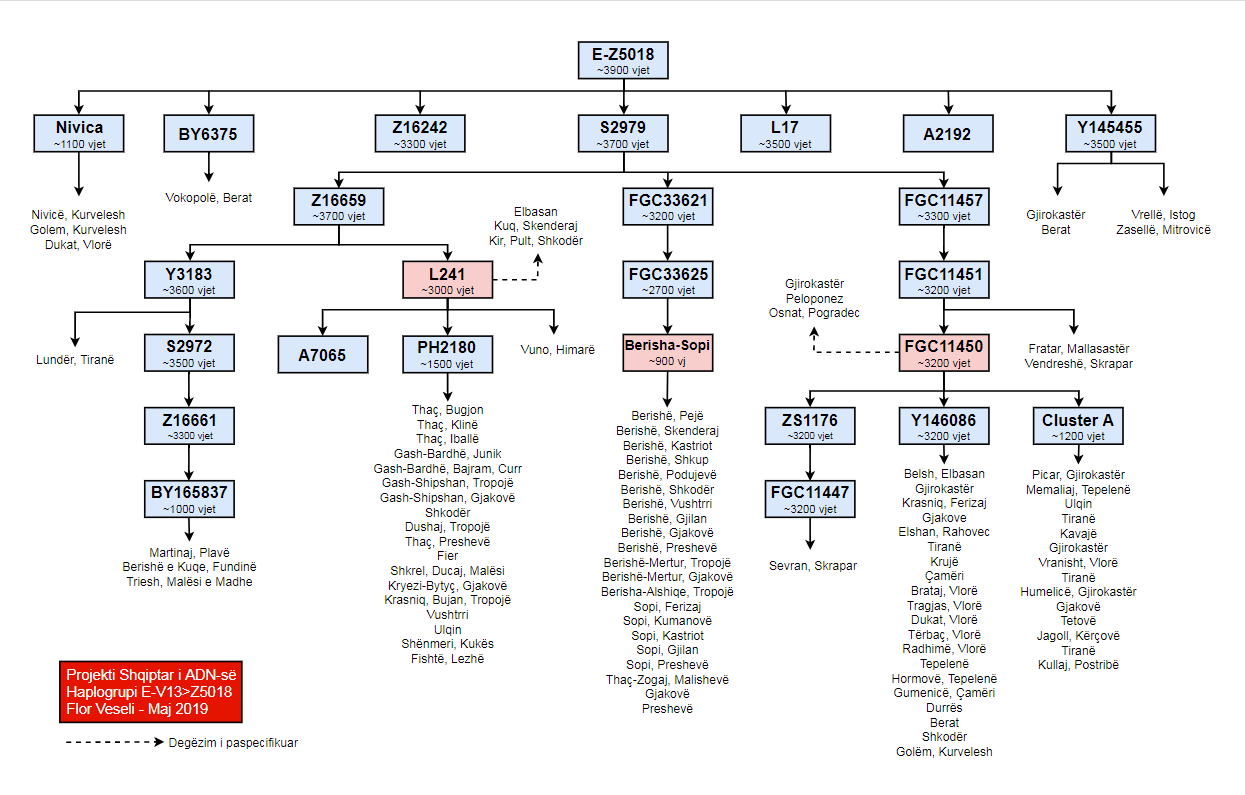It's not my intention to provoke and fight with other members here, neither to teach them as if I am some authority here.
All I am interested about is to engage in conversation about the history and the movement of the people through the history following the patterns of diversity and location of the y-dna markers!
That said I am mostly interested about the Balkan history and maybe a little bit biased towards E-V13 in general!
So I am glad to have a conversation with anyone here who has the same passion as me.
For E-V13, I personally think that it's entirely European marker that was formed in Europe!
Imo, it was it's father clade E-L618, that migrated to Europe through Anatolia.
It was in the Northern Balkans, possibly Moldavia and surroundings, when E-V13 was absorbed in the Indo-European population and had a sudden boom in numbers, splitting in multiple subclades!
Some older subclades like E-PH1246, were probably among the first that penetrated the Southern Balkans across the river Danube!
This subclade shows pattern of Western Balkan dispersion and could be linked with the earliest populations living in the Southern Balkans, Brygians maybe?
Could be and some could have been Mycenaean even!
But apart from this one, all other subclades show Northern Balkan dispersion and could have been late BA, EIA arrivals!
Other subclades, notably some of those under CTS9320, could have migrated into the Southern Balkans along the course of the IA and could have been very late arrivals!
Even looking at Greece and it's y-dna dispersion, we can see a pattern in which J2a and R1b are mostly found in the South, E1b in the middle and R1a and I2a in the North!

That's like a geological picture, the same way the geologists look into the layers of the earth to unearth it's mysteries!
And many E1b in Southern Greece and the islands are not even E-V13 but some other clades like E-V22!
That being said, I think that the true BA Southern Balkan markers were R1b and J2a!
That Greeks today have a lot of E1b doesn't say much about the situation in the Southern Balkans during BA as they were not a closed group of people during their history as heirs of the Roman and than the Byzantine empire, and they did assimilate a lot of other people and let's not forget about many survivors of the Northern Balkans during the medieval period that found refuge in the Greek coastal cities!
Imo, some closed group of people like the Aromuns, is better suited for studying the situation of the Balkans south of Danube when it comes to y-dna!
They even show much more diversity in y-dna haplotypes, unlike the Albanians who as you said belong to younger subclades who show founder effect!
And the situation with the Aromuns is the following: E-V13 is not the most dominant haplogroup in them!
J2 is, followed by R1b, although we should split J2 to J2a and J2b!
However, regarding J2a and J2b there is a big difference in different Aromun communities that shows that even the Aromuns should not be looked upon as a homogeneous group but rather as a different Balkan communities(Illyrians, Thracians, Dacians), that came under the Latin umbrella!
I have read somewhere that the Gramostian Aromuns are the purest Aromuns in sense that they didn't even mix much with other groups of Aromuns and the Aromuns of Stip, Macedonia, are Gramostians by origin so they might be the best candidates for examining.
Imo, the Gramostian Aromuns could be very good candidates for some Balkan population living north of the Greeks, Paeonians, Thracians?
E-V13 is very strong in them, around 20 % I think, however their E-V13 is different than the one observed in the Albanians but show links with the one in Bulgaria, something that I have observed with my own subclade!
They lack I2a-Dinaric which confirms my suspicion that the earliest migrant of Slavs in the Balkans were not heavy in I2a but in R1a!
Some R1a could have been brought by Goths even!
I2a probably came with later arrivals!
For example, Ivan Mikulcic, the Macedonian-Slovenian archaeologist says that on the territory of Rep. of Macedonia up to the 9th century, could not be observed any Slavic settlements unlike in Greece!
It seems that those early Slavs somehow had bypassed the territory of Rep. of Macedonia and settled heavily in Greece!
The first Slavic artefacts and settlements are observed when the Bulgars conquered the territory of Rep. of Macedonia in the middle of the 9th century!
Therefore, E-V13 in the Balkans should be linked with some cultures like Urnfield culture, Gava culture, Bassarabi culture??
Rather than being linked specifically with the Thracians because we observe diversity of subclades among different populations, however it's urheimat is definitely North of river Danube!
This logic of mine also follows the pattern in which E-V13 is stronger in the Slavic speaking populations of the Balkans today than let's say R1b or J2, so I think that many South Slavic speaking people had came in the Balkans already rich in E-V13 that they perhaps could have absorbed it on the territory of modern Romania and Hungary, rather than acquiring the E-V13 with the assimilation of local people after they've settled south of the river Danube!
In that sense, I believe that the Slavic speaking people of the Balkans are mostly Slavic-Dacian/Pannonian mix!
In that sense also, many medieval historians were not wrong calling the Sclavinae of the Balkans as Getae!
So, E-V13 could have been the most dominant haplogroup among the Dacians and Pannonians, and as the line of divide between Illyrians and Thracians is very thin, perhaps is better to say that E-V13 is more Thraco-Illyrian than Greek marker!



